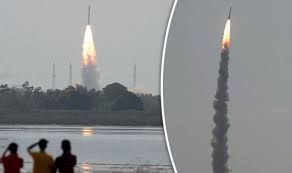
Breaking News
 Carnivore Got Me 90% There. This One Drink Changed Everything
Carnivore Got Me 90% There. This One Drink Changed Everything
 WHY COMFREY IS A MIRACLE PLANT
WHY COMFREY IS A MIRACLE PLANT
 They've Been Feeding You Poison (And Calling It Food)
They've Been Feeding You Poison (And Calling It Food)
 Tattoo ink may cause prolonged changes to the immune system
Tattoo ink may cause prolonged changes to the immune system
Top Tech News
 Perfect Aircrete, Kitchen Ingredients.
Perfect Aircrete, Kitchen Ingredients.
 Futuristic pixel-raising display lets you feel what's onscreen
Futuristic pixel-raising display lets you feel what's onscreen
 Cutting-Edge Facility Generates Pure Water and Hydrogen Fuel from Seawater for Mere Pennies
Cutting-Edge Facility Generates Pure Water and Hydrogen Fuel from Seawater for Mere Pennies
 This tiny dev board is packed with features for ambitious makers
This tiny dev board is packed with features for ambitious makers
 Scientists Discover Gel to Regrow Tooth Enamel
Scientists Discover Gel to Regrow Tooth Enamel
 Vitamin C and Dandelion Root Killing Cancer Cells -- as Former CDC Director Calls for COVID-19...
Vitamin C and Dandelion Root Killing Cancer Cells -- as Former CDC Director Calls for COVID-19...
 Galactic Brain: US firm plans space-based data centers, power grid to challenge China
Galactic Brain: US firm plans space-based data centers, power grid to challenge China
 A microbial cleanup for glyphosate just earned a patent. Here's why that matters
A microbial cleanup for glyphosate just earned a patent. Here's why that matters
 Japan Breaks Internet Speed Record with 5 Million Times Faster Data Transfer
Japan Breaks Internet Speed Record with 5 Million Times Faster Data Transfer
Indian Rocket Launches 31 Satellites to Orbit

The Polar Satellite Launch Vehicle (PSLV) launched from Satish Dhawan Space Centre, on India's southeast coast, at 11:27 p.m. EST (0427 GMT and 0957 local Indian time on Nov. 29).
The PSLV's primary payload was the 840-lb. (380 kilograms) HySIS satellite, whose main goal "is to study the Earth's surface in the visible, near-infrared and shortwave-infrared regions of the electromagnetic spectrum," officials with the Indian Space Research Organisation (ISRO) wrote in a statement after the successful launch. [See amazing launch photos for India's HySIS mission]
Also aboard the PSLV were 29 nanosatellites and one microsatellite, which were provided by eight different countries. All of these little spacecraft reached their intended orbits, ISRO officials said.

 Advanced Propulsion Resources Part 1 of 2
Advanced Propulsion Resources Part 1 of 2

